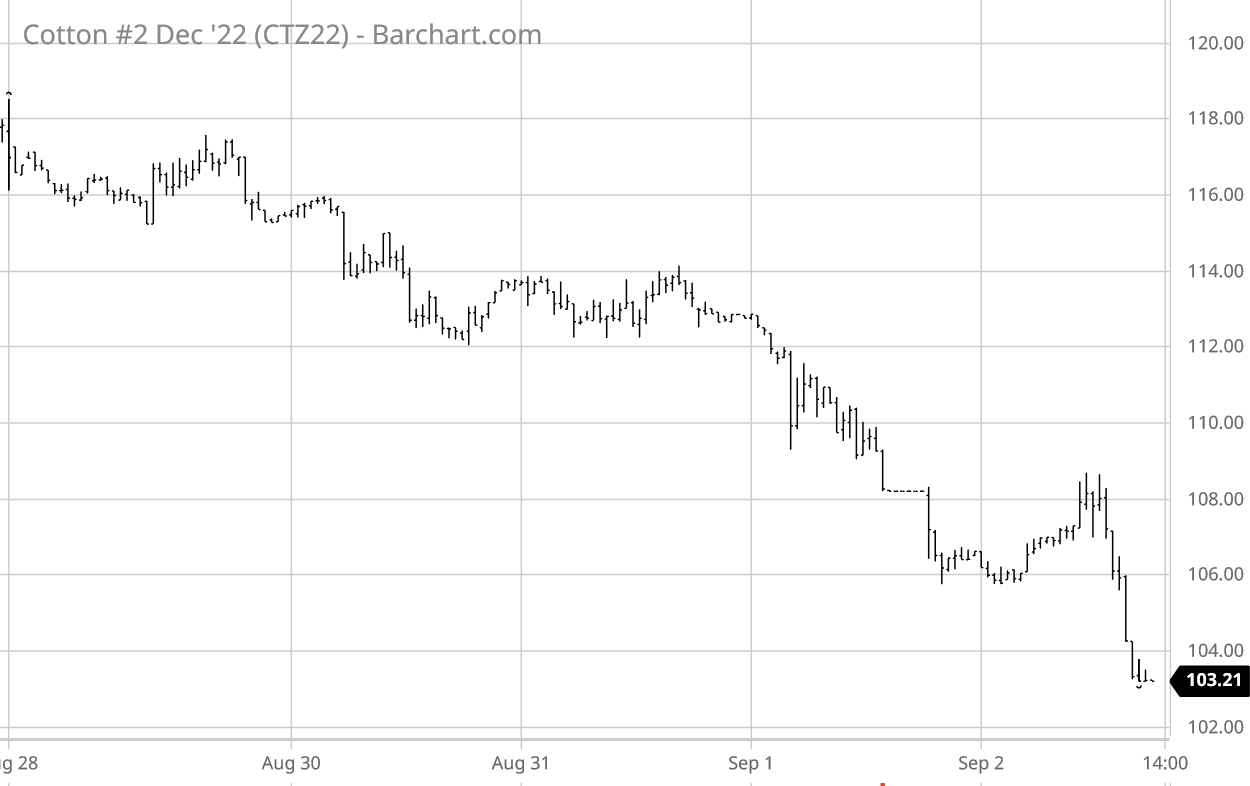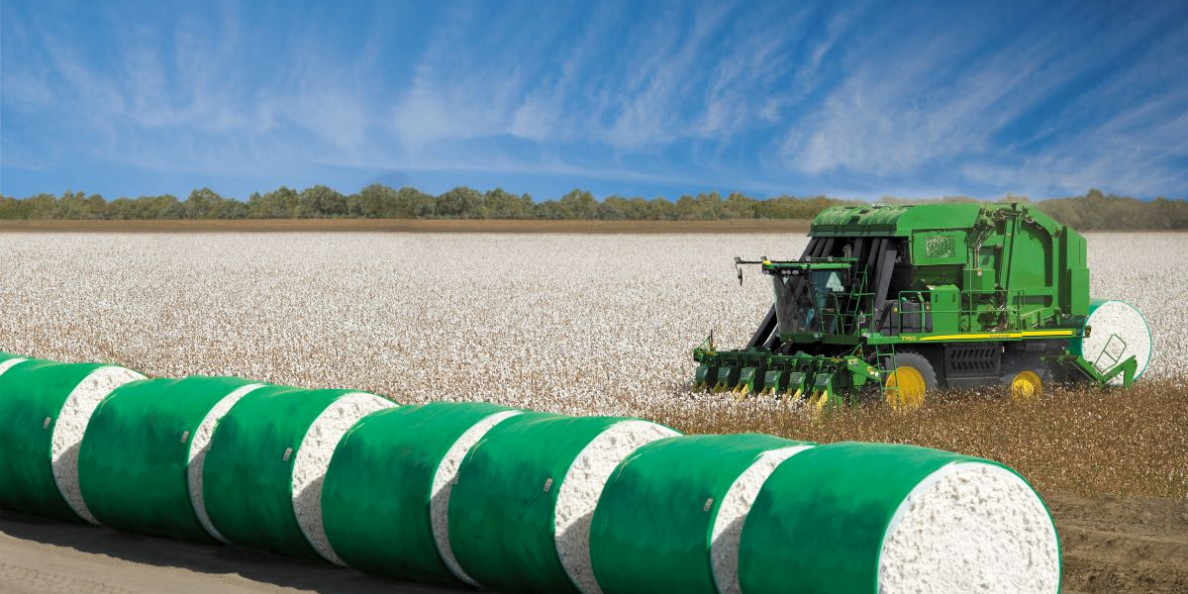The week ending Friday, September 2 saw ICE futures on a gentle downward glide path before dropping into a rough limit down landing pattern for Thursday and Friday (see chart above courtesy of Barchart.com). Dec’22 settled down five cents on Friday at 103.21 cents per pound, while the Dec’23 was 81.92 cents per pound. Chinese cotton prices and the A-Index had a flatter pattern this week than did ICE futures.

Cotton-specific influences this week included continued rains over the Cotton Belt, some useful and some not (i.e., southern Texas and the lower Delta region). The week saw a continuation of very light-to-moderate demand in inactive/slow physical trading. USDA’s weekly reports on export sales and export shipments remain delayed due to technical glitches in their new web delivery. U.S. boll setting and opening progress were a little above the average pace, respectively. On the other side of the world, the Indian monsoon rains remained normal to excess in the important west-central cotton growing states. The news from Pakistan is tragic, where devastating flooding has reportedly cost over a thousand lives and almost half of the cotton crop.
ICE cotton futures open interest rose very slightly across the week, while prices declined. The regular Tuesday snapshot of speculative positioning (through August 30) showed mixed adjustments with 3,101 more hedge fund longs, partially offset by reinforced by 1,872 more hedge fund shorts, week over week. The index fund net long position, was little changed with only 683 longs week over week. Note that these adjustments do not include changes in open interest over the latter part of this week (i.e., the limit price moves).
CBOT new crop corn and soybean futures both had a slight downtrend across the week, while, KC wheat futures gyrated more in a sideways pattern. The U.S. dollar index rose peaking Thursday at 20-year highs. Dollar strength remains buoyed by weakness in competing currencies and hawkish Federal Reserve stances, all of which is likely contributing to the weakness in commodity markets.
For more details and data on Old Crop and New Crop fundamentals, plus other near term influences, follow these links (or the drop-down menus above) to those sub-pages.
Source: TAMU

